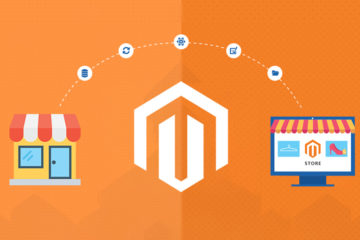Several businesses grapple with their content to get in front of their target audience. So,…
A paid search strategy is an excellent way to contact customers who are actively browsing for products similar to yours when we talk about eCommerce. Make your content visible to the appropriate audience and display your advertisements at the top result pages of search engines by taking advantage of eCommerce advertising.
Several eCommerce businesses grapple while deciding which is more suitable for their business: SEO or paid search. So to help you ease your problem, we’re outlining a few tips to optimize your campaigns and increase revenue:
- Use audience targeting
- Conduct a competitive audit
- Utilize Google shopping, search, and display ads
- Use retargeting, reporting, and optimization
Use Audience Targeting
Identify the intent of the audience by looking at the phrases and keywords your audience is using for search. Although the intention behind a search varies immensely, audience targeting is an excellent point, to begin with for segmenting users.
Reach customers with high-intent by tapering your potential audience to communicate with the people who are closest to your core customer base. From there, target specifically distinct segments of consumers, leads, or prospects to give them an offer that is most relevant to their needs.
We suggest utilizing the following in your paid search strategy to help your eCommerce store get the right audience:
- Affinity markets
- Interests
- Demographics
- Purchase intent
Affinity audiences let eCommerce businesses reach users with a qualified enthusiasm for a particular topic based upon their habits and lifestyle. Make use of users’ interests while utilizing paid media platforms, such as Facebook or Instagram, to decide whether you need to target them.
Cater ads to particular demographics that best suit your promotion − like anything from area/location and age group to education level and many more.
However, just because an individual fits in a specific demographic and has similar interests as of your targeted audience does not imply that they are ready to (or want to) buy from your store.
Target high-intent shoppers by offering advertisements to the users searching for long-tail keywords. Although long-tail keywords generate less traffic, they often have a higher conversion rate because of their specificity. For instance, a person searching for a “professional camera” is still in consideration of the buyer’s journey while a person searching for a “Nikon D5600 DSLR video camera” is expected to be in the decision-making stage and ready to buy the product.
Conduct A Competitive Audit
Examine the competitive aspect to differentiate your business and approach new customers. Discover what keywords the ads of your competitors are showing up for, and think of adding those keywords to your advertisement groups. Ideal keywords have low competition and high search volume.
Analyze to see if there is an overlapping of the audience between your brand and a competitor. If that is the case, consider enforcing strategies your opponent is using to improve the possibilities of your audience taking action on your advertisement. The same formula can be used for product overlap − review what strategies are being used by the opponents selling similar products or services.
Utilize Google Shopping, Search & Display Ads
Using different kinds of ads enables you to reach your shoppers wherever they are in the shopper’s journey. We suggest that your paid search strategy employs a blend of ad formats to draw, engage, and nurture buyers through the marketing funnel. Make sure to optimize your campaigns with high-impact keywords to boost web traffic with a low CPC, no matter which ad format you choose.
Google shopping advertisements serve as a great visual of your product, its cost, the name of your store, and other valuable product information. Search ads are excellent for targeting high-intent consumers and are perfect for driving traffic through inquiries that don’t include keywords. Lastly, display ads are usually shown in the Google Display Network, helping to build brand awareness.
Use Retargeting, Reporting & Optimization
Have you ever experienced seeing the same product that you viewed online without purchasing it? It is called retargeting.
Retargeting is used to nurture the visitors of the site and lead them back to your website to buy the product(s) they’ve shown interest in, viewed previously, or abandoned in their shopping cart.
We suggest associating with an eCommerce PPC agency, such as Axtrics eCommerce, that take advantage of detailed reporting and optimization to lower CPC (cost-per-click), maximize return on spend, and let you reach new shoppers.
Wrap-up
Implementing a unique and effective paid search strategy is crucial in attracting more new customers and nurturing the existing ones. To know more about how Axtrics’ website and marketing services can help you remodel website visitors into repeat shoppers, communicate with us through the comment section given below with any queries or concerns. We will contact you shortly!














Leave a Reply